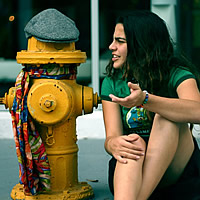Cartoonist Hugh MacCleod’s post about ‘Social Objects for Beginners‘ is many years old (like an ancient rune in webtime), but I keep going back to it. It’s an issue so central to the cultural manager’s work and leadership that it deserves recurring attention.
MacCleod builds on the insights of anthropologist and social software maven Jyri Engestrom, and defines the concept this way:
The Social Object, in a nutshell, is the reason two people are talking to each other, as opposed to talking to somebody else. Human beings are social animals. We like to socialize. But if think about it, there needs to be a reason for it to happen in the first place. That reason, that ”node” in the social network, is what we call the Social Object.
There are thousands of examples of ‘social objects’ in use. MacCleod offers seven of them. From bowling, to books, to Star Wars trivia, to a socialite’s charity ball, social objects give people something to talk about, to gather around. Every post or status update or video or article posted on Facebook is a social object — it’s purpose is to start a conversation, or continue one (through comments, or ‘likes’, or sharing, or timelines). And most of the social network sites we use everyday use ‘objects’ to advance social goals — YouTube uses videos, Flickr uses photos, Pinterest uses clippings and snapshots from around the web. Wine is a social object, so is coffee, and food, and on and on and on.
MacCleod’s first essential point about social objects is that ”social networks form around social objects, not the other way around.” Social networks are just systems of potential connections, a marketplace ready for transaction. Social objects activate people within those networks, they are the magnets of connection and interaction. His second essential point is that ”social objects by themselves don’t matter in the grand scheme of things.” That is, without one thing to talk about, people will find another thing.
Obviously, none of this is revelatory to the arts. Arts events, objects, experiences, and opportunities are clearly social objects, and we have often considered them as such in our building design, our program design, and our experience design around live arts engagement. But we often forget, somewhere in there, that the art is not the center of that universe. The connection is the center: the conversation, the shared construction of meaning or purpose or identity or community.
We are all social subjects, in search of social objects to draw our attention and give us something to talk about. Discuss amongst yourselves.



I like this line at the end, “We are all social subjects, in search of social objects to draw our attention and give us something to talk about. Discuss amongst yourselves.” It underscores that it’s all about marketing.